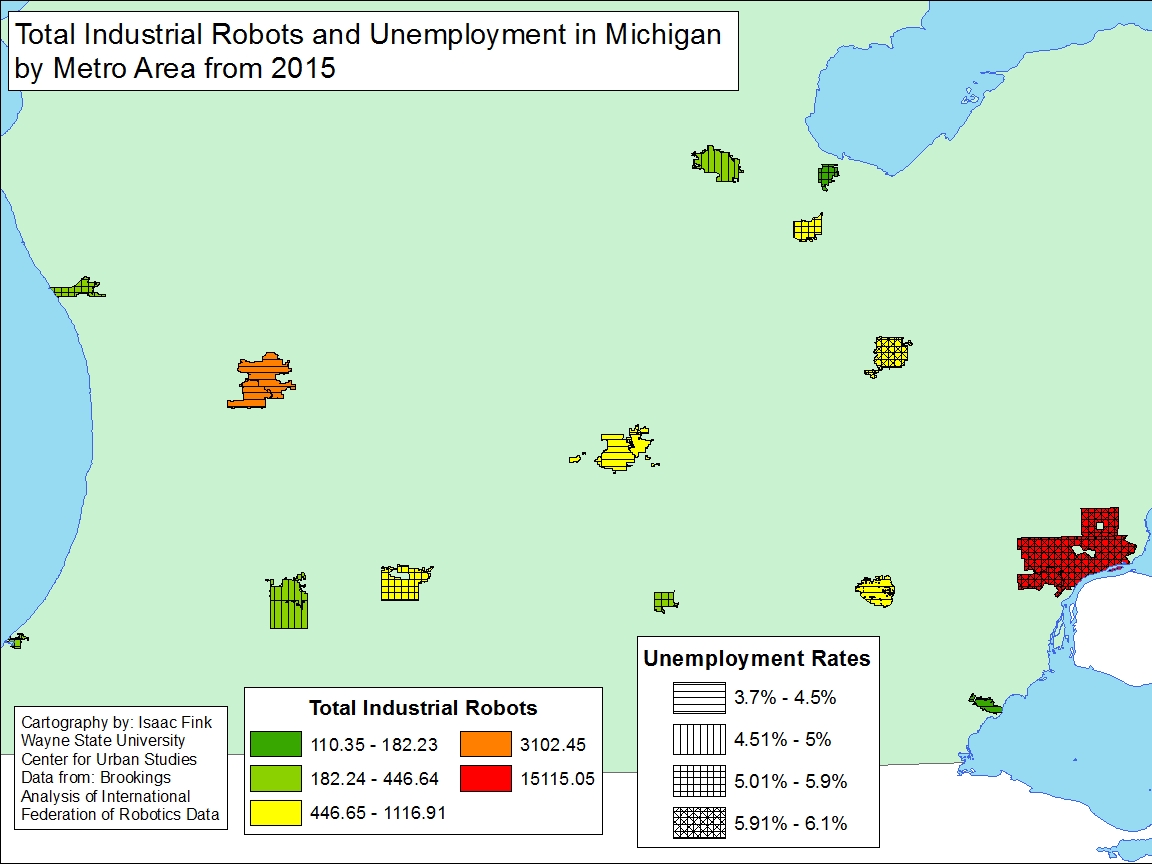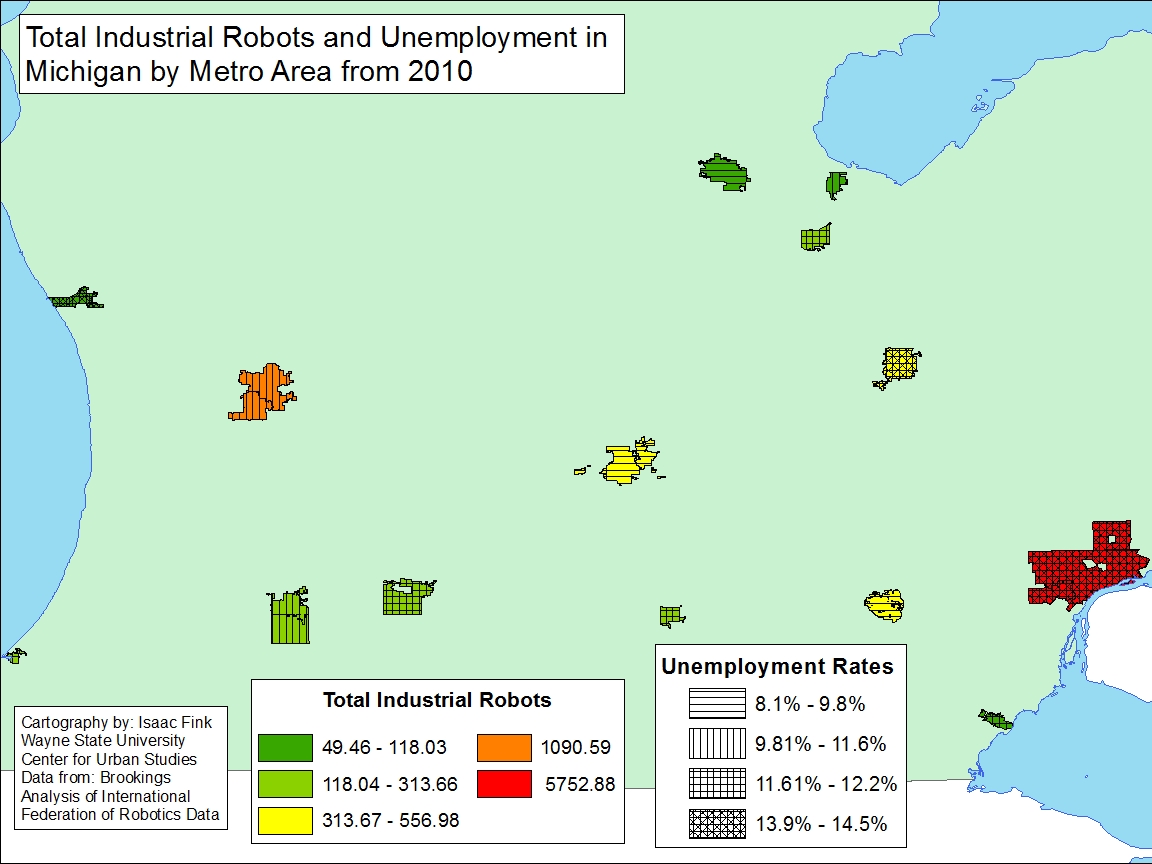The data we’ve presented on robots in Michigan are clear. Their numbers are increasing. And the interpretation of those numbers by some economists are also clear. A recent Detroit Free Press article, on a Brookings study says that M.I.T and Boston University researchers currently estimate that the addition of one robot per 1,000 workers leads to the unemployment of up to six workers. So, unemployment might be going up as robots increase? But no.
While the number of industrial robots in use has increased throughout the State of Michigan between 2010 and 2015 the unemployment rates for the affected Metropolitan Statistical Area’s (MSA) have not. For example, in the Battle Creek MSA the Brookings Institute Analysis of International Federation of Robotics Data found there were about 17 industrial robots per 1,000 workers in 2015, this equated to a total of about 840 industrial robots in use in the Battle Creek area in 2015. Also, in 2015 the unemployment rate for the Battle Creek MSA was 5.1 and in 2010 the unemployment rate for that area was 11.7. A substantial decrease.
In the Detroit Metropolitan area, the number of industrial robots in use has nearly tripled since from 5,752 in 2010 to 15,115 in 2015. If each robot is worth more than one job as the economist projects, then that would mean a lot of unemployed people. But the unemployment rate fell from 13.9 in 2010 to 5.9 in 2015. According to the Michigan Department of Management, Technology and Budget none of the State’s 14
MSA’s experienced an increase in the unemployment rates between 2010 and 2015. So, more robots, but a decrease in unemployment? Well, maybe, but some might say we’re mixing up a macro trend—the overall
expansion of the economy since the 2008 recession—with a more micro process—the increase in the number of robots, which would not have so large an effect as to decrease overall unemployment. There still might be an effect, but at a lower level. And it might be consistent with recent findings from University of
Michigan economists who are indicating that the expansion has brought back only about 73 percent of the jobs lost in the recession.
Where are the other 27 percent? Robots and offshore, perhaps?

